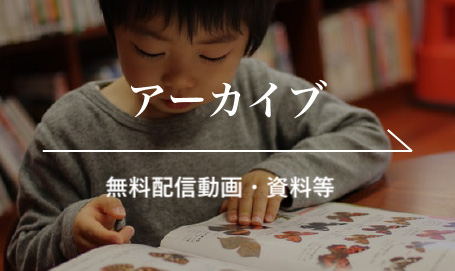< VOLUME 44, No.2 >
Kishaba Isoko. A Study of Zenrin Kindergarten in Okinawa : Focusing on around 1907.
Research on Early Childhood Care and Education in Japan, 2006, 44(2), 104-113.
Early Kindergarten Education in Japan was patterned after western countries, including their culture and goals for a modern society. It is important to find out how it began and how it became popular in each specific area of Japan. This study describes Zenrin Kindergarten in Okinawa, as it was not clear when it started or who founded it. Records of the American Baptist Missionary Union and Woman’s Baptist Foreign Missionary Society show that it was founded by Mrs. Gazelle R. Thomson who was a member of WBFMS. In November 1907, the kindergarten opened as Aikwa at the old capital Syuri. Financially supported by WBFMS, the kindergarten continued to operate. Mrs. Ryuko Mori from Tokyo and Miss Nabe Urasoe from Okinawa were involved in the beginning.
Keywords: Zenrin Kindergarten, Aikwa Kindergarten, Gazelle R. Thomson, Naha Baptist Church, Mrs. Mori
—————–
Shimizu Yoko. A Study on the First Period of the Kindergarten Attached to Kagoshima Women’s Normal School.
Research on Early Childhood Care and Education in Japan, 2006, 44(2), 114-123.
The kindergarten attached to Kagoshima Women’s Normal School is the second oldest in Japan. Despite its renowned name, it has never been studied completely. One of the finest previous studies is Mr. Murayama’s “The First State Kindergarten in Kagoshima” published in “Japanese History of Child Care.” Unfortunately, his study concentrates on its regulations, partly abridged, as stated in “The Education Ministry Journal.” This research focuses on the recently discovered full version of “Regulations of a Kindergarten attached to Kagoshima Women’s Normal School.” It compares them with the “Regulations of a Kindergarten attached to Tokyo Women’s Normal School.” This paper aims to clarify the entire picture of the kindergarten and discusses the comparative significance of these schools in the development of Japanese child-care institutions.
Keywords: The kindergarten attached to Kagoshima Women’s Normal School, the first state kindergarten in Japan, the full version of “Regulations of a Kindergarten attached to Kagoshima Women’s Normal School”, Fuyu Toyota
—————–
Shiozaki Miho. The Change from Private Nursery Services into Public Facilities and the Thought on Lunch Programs : The Historical Background of Dual Systematization as Kindergarten-Nursery Systems.
Research on Early Childhood Care and Education in Japan, 2006, 44(2), 124-134.
In this paper, I examine the reasons why nursery services were converted into public services during Taisho period, the first term of Showa period in modern Japan. At the time of the formation of “Koritsu Takujisyo,” the beginning of the public day nursery, social services were transformed into public institutions against a background of modern Japanese Liberalism influenced by Social Liberalism. I examine the process of how kindergartens became separately systematized from nurseries using the thought on lunch programs based on nutrition.
Keywords: lunch program, public services, dual systematization of kindergarten and nursery, Social liberalism in modern Japan
—————–
Higashino Mitsunari, Yamase Noriko. The View of Childhood in the Basic Law for Anti-Declining Birthrate Society Measure.
Research on Early Childhood Care and Education in Japan, 2006, 44(2), 135-144.
This study aims to examine the view of childhood in the Basic Law for Anti-Declining Birthrate Society Measure. We analyzed the minutes of the Diet about the Basic Law for Anti-Declining Birthrate Society Measure. The result clarified the following points: (1) Originally, declining birthrate was recognized as an issue of education. However, it became an issue of social security and a problem of decreasing work force because there was a close relation between them. (2) But concerns about political correctness changed the focus of the problem back into an education issue again. As a result, the Bill for Anti-Declining Birthrate Society Measure was passed in spite of several opinions against it.
Keywords: the view of childhood, the Basic Law for Anti-Declining Birthrate Society Measure, the issue of education
—————–
Otsuka Rui. Having an Active Relationship with Others : Elucidation on the Consciousness of a Child in a Children’s Institution, Based on Husserl’s Theory of Intersubjectivity.
Research on Early Childhood Care and Education in Japan, 2006, 44(2), 145-155.
Considering the records of the relationship between the author and a child in a children’s institution, this paper tries to clarify the transitions of the child’s relationships with others, based on Husserl’s theory of intersubjectivity. Since the child received little care from his parents, he appeared to find it difficult to adequately experience the transition from “symbiosis” with his mother to “individuation” during his early infancy. Therefore, by actively experiencing relationships with others, for example, venting anger on others, he attempts to create an “emotional linkage” and personal bond between himself and others that occur naturally in our consciousness. Thus, it is elucidated that, by virtue of these attempts, he is able to develop relationships with others in various and more sensitive ways.
Keywords: relationship with others, personal bond, empathy
—————–
Imagawa Kyoko. Creating a Preschool Environment to Encourage Children’s Expression : A Map of Foundation of Expression through Sounds.
Research on Early Childhood Care and Education in Japan, 2006, 44(2), 156-166.
This research analyzes individual cases to reveal how children form the basis of expression through sounds by interacting with the environment in their daily preschool life. Children have many experiences relating to sounds in their lives and these experiences basically involve various factors in their development. Many cases incorporate important factors to promote “development of expression through sounds.” In this paper, based on the fieldwork records, children’s experiences relating to sounds are displayed in a sketch of the preschool. Subsequently, similar experiences observed in a bamboo forest are analyzed to examine the meaning of children’s experiences from a viewpoint of fostering expression through sounds. These observations provide an important viewpoint to think about children’s development of expression in relation to environment.
Keywords: expression, development of expression, expression through sounds, interaction with environment
—————–
Hara Hiromichi. Development of Children’s Group Play and an Ideal Environmental Composition : A Case Study of Free Play in Child Care.
Research on Early Childhood Care and Education in Japan, 2006, 44(2), 167-177.
The surrounding environment is regarded as a strong influential factor that automatically contributes to the formation of children’s group play. This study surveyed the physical environment of group play in a day nursery which emphasized free play in Chiba prefecture, analyzing the effect of the environment according to each unit of play action. The result clarified a specific structure of group play and suggested necessary environmental conditions to facilitate and encourage the development of group play.
Keywords: group play, subjectivity, play environment, environmental composition, action analysis
—————–
Minowa Junko. Children’s Interaction in Play with Sand.
Research on Early Childhood Care and Education in Japan, 2006, 44(2), 178-188.
This research examined what kind of images are verbally and visually exchanged between infants during group play with sand. While they played with sand, their roles, plans, objectives, and circumstances were analyzed. It was clear that they exchanged and shared their images of themes, plans, roles, and associations through some verbal communication, but mostly through their movements with sand, and furthermore that they use the sand itself to communicate with each other through their movements with sand. The study suggests that children exchange and share their images, often in unspoken ways, through their movements with sand and the sand changed by their movements.
Keywords: play with sand, cooperative play, 3 – 6 years old children, social play
—————–
Yokoi Hiroko. A Study on Grasping “Play” in Early Childhood Care and Education : Exploring the Reality of Understanding “Play” from a Phenomenological Point of View.
Research on Early Childhood Care and Education in Japan, 2006, 44(2), 189-199.
The purpose of this study is to clarify how we grasp the concept of “play in early childhood through examining two episodes from the author’s experience. The analysis is based on some phenomenological theories, especially those of J. Henriot, M. Merleau-Ponty and F. Kummel. Findings are as follows. First, “play” exists when we name a child’s behavior “play” or recognize it to be “play” Second, the above-mentioned action is not only useful but also a cause of “misunderstanding” in my process of comprehension. Third, when I grasp a child’s experience, it synchronously transforms my existence. Finally, it is necessary to break away from a tendency of closed perception in order to transcend this misunderstanding and reach a new understanding.
Keywords: grasping of “play”, phenomenological theory, transformation of my existence
—————–
Kanda Takako. Research on The Process of a Foreign Child’s Adjustment to a Day-Care-Center : From a Case of an International Student’s Child.
Research on Early Childhood Care and Education in Japan, 2006, 44(2), 200-209.
This research analyzed the process of a five years old foreign child’s adjustment to a Japanese day-care-center by observing him and interviewing his teacher and his mother about “participation to group activities”, “social development”, and “language.” Using Super and Harkness’s term: “the developmental niche,” the process of adjustment was examined from the viewpoints of the physical and social settings, the customs of child care, and the psychology of the caretakers. It was discovered that his teacher and his mother had different expectations for him. In accordance with his adjustment, his parents had difficulties in communicating with him, and his mother worried about his readjustment. It is important to discuss the concept of adjustment not only from the teacher’s view point but also from their parents’, and to seek alternative ways to develop more common understanding between parent and teacher.
Keywords: a foreign child, adjustment, a day-care-center, developmental niche
—————–
Tanji Kyoko. Expansion of the Function of Kindergarten and Nursery School and the Unification of Kindergarten and Nursery School : Based on Data Collected on Institutions by Questionnaire.
Research on Early Childhood Care and Education in Japan, 2006, 44(2), 210-221.
The purpose of this study is to examine the connection between the expansion of the function of kindergarten and nursery school and the unification of them. For this purpose, the author analyzed current trends and the issue of the expansion of the function of kindergarten and nursery school based on the results of research into each of the institutions. The following two points became clear from the result of the investigation. One point is that the function of the kindergarten and that of nursery school have become similar. Another point revealed is that the needs of a child-nurturing family exist as a background of the expansion of the function. These findings suggest that the expansion of the function may possibly result in the unification of kindergarten and nursery school.
Keywords: expansion of the function of kindergarten and nursery school, unification of kindergarten and nursery school, kindergarten, nursery school, policy of child care
—————–
Park Shin-young. The Effects of Cognitive Improvement on Child-Rearing Attitudes and Stress Levels.
Research on Early Childhood Care and Education in Japan, 2006, 44(2), 223-234.
This research was to investigate how child-rearing attitudes and stress levels change after a self-training program to improve “cognition of child-rearing.” A 2-week self-training exercise for 230 mothers who had preschool children and elementary school children was comprised of five ways of altering their ways of scolding or correcting their children and the five ways to reflect and improve on their inner state of being. The results revealed that after the process of self-training, the mothers improved their cognition of child-rearing practices, learned to recognize and mitigate their impulsive behaviors and significantly reduced their stress levels while dealing with their children. These results indicate that a self-training for child-rearing improves a mothers’ cognitive competence and such improve influences mother-child relationship.
Keywords: child-rearing, child-care attitude, child-care stress levels
—————–
Kawabe Takako. How Improvements of Play Environment in a Kindergarten Playground Affect Children’s Play : Making a New Wooden Deck.
Research on Early Childhood Care and Education in Japan, 2006, 44(2), 235-245.
This action research involved creating a new deck to improve the utility of a playground in a kindergarten and consequently to enrich the quality of children’s play. In order to reduce conflicts among children caused by the limited size of the playground, the following changes were made: a constructive environment was created which includes both public space and some areas for individual play. In particular, the new deck provided children alternative spaces to hang around and enjoy playing by linking them feely and providing fewer physical restraints in a play context. These changes significantly facilitated the children’s play and enriched their imagination. To improve the quality of a kindergarten environment, we need to consider the relationship between a constructive environment and the quality of play.
Keywords: effect of children’s play, improvement of play environment, kindergarten playground
—————–
Nishiyama Osamu. Making of a Multidimensional Childcare Persons’ Efficacy Scale to Develop the Abilities Which Young Children Keep Good Relationships with Others.
Research on Early Childhood Care and Education in Japan, 2006, 44(2), 246-256.
The purpose of this paper is to measure childcare persons’ efficacy in developing young children’s “human relationships” as a part of the contents of childcare. It also reveals a new multidimensional scale that can be used to improve the quality of childcare and sustain that quality. At first, as a preliminary investigation, 64 senior childcare persons were questioned to determine what abilities they believed childcare persons should develop to foster “human relationships.” Secondly, 378 childcare persons and 258 pre-school teachers were questioned using an evaluation questionnaire employing a 7-point scale rating of human relationship development efficacy regarding 79 items. The result of factor analysis yielded 5 factors, and 25 items were selected carefully as items for the measurement and evaluation (I named CPE-HR25). Finally, a practical model was developed based on the factors, and ways to use this new multidimensional scale are suggested.
Keywords: contents of childcare “human relationships”, childcare persons’ efficacy, multidimensional structure
—————–









